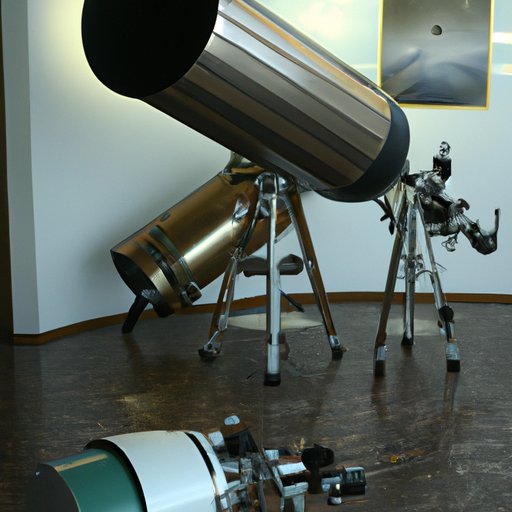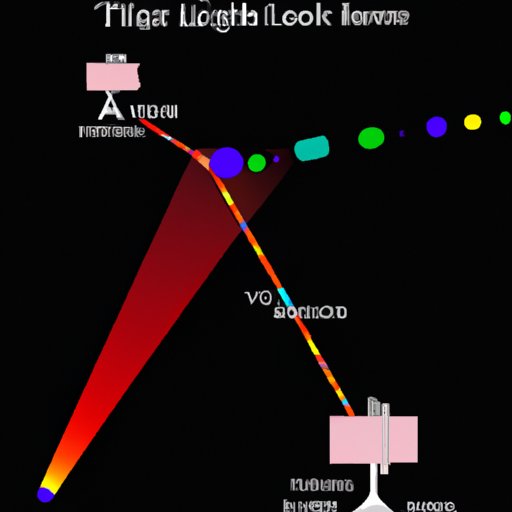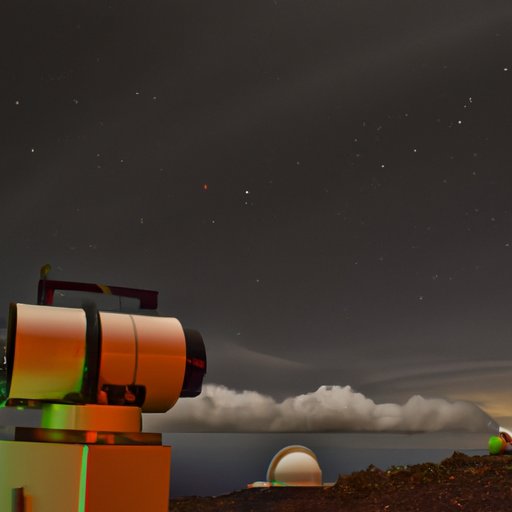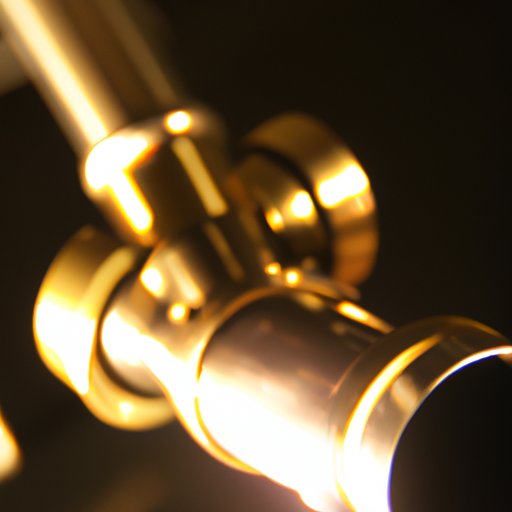Introduction
A telescope is an optical instrument used to observe distant objects. It consists of lenses, mirrors, and other components that collect and focus light from distant sources. Telescopes are used in astronomy, navigation, and other fields to observe and measure objects in the sky, ranging from stars and planets to galaxies and quasars. By magnifying the light from these distant objects, telescopes allow us to explore the universe beyond our own planet.
Explaining the Parts of a Telescope and How They Work Together
In order to understand how a telescope works, it is important to understand the individual components of the instrument and how they work together. The primary mirror is the most important part of a telescope. It is typically a large concave mirror which collects the light from distant objects and reflects it back towards the eyepiece lens. The secondary mirror is a smaller mirror which redirects the light from the primary mirror to the eyepiece lens. The eyepiece lens is a magnifying glass which focuses the light onto the observer’s eye.
The focal length of the telescope is determined by the curvature of the primary mirror. This determines how much light is collected by the telescope and how much magnification is possible. The aperture of the telescope is the size of the opening which allows light to enter. The larger the aperture, the more light can be collected, and the sharper the image will be.

Overview of Telescopes: From the First Refractors to Modern Reflectors
The first telescopes used by humans were refractor telescopes, which use lenses to focus the light from distant objects. Refractor telescopes consist of two or more curved lenses which capture the light from an object and focus it onto an eyepiece. While these telescopes are still in use today, they have been largely replaced by reflector telescopes, which are more powerful and efficient.
Reflector telescopes use mirrors instead of lenses to focus light. The primary mirror captures the light and reflects it to a secondary mirror, which then directs the light to the eyepiece. This design allows for much larger apertures and more light-gathering power than refractor telescopes, allowing for clearer images and more powerful magnification.

An Introduction to the Properties of Light and How Telescopes Harness Them
In order to understand how telescopes work, it is important to understand the properties of light. Light travels in waves, and each wave has a different wavelength. Visible light, which is the light we can see with our eyes, has a range of wavelengths from about 400 nanometers to 700 nanometers. Telescopes collect and focus this visible light, as well as other types of light such as infrared and ultraviolet light.
Telescopes work by collecting and focusing light from distant objects. The primary mirror collects the light, while the eyepiece lens focuses it onto the observer’s eye. This allows us to see the details of distant objects which would otherwise be too faint to observe.
The Different Types of Telescopes and How They Are Used
There are several different types of telescopes, each designed for a specific purpose. Refractor telescopes are used for observing planets and stars, while reflector telescopes are used for observing galaxies and nebulae. Catadioptric telescopes combine the features of both refractor and reflector telescopes, and are often used for astrophotography. Radio telescopes are specialized instruments used to observe radio waves from distant galaxies.
How Do Telescopes Magnify Images?
Telescopes magnify images using a combination of their magnification power and the eyepiece lens. The magnification power of a telescope is determined by its focal length, which is the distance between the primary mirror and the eyepiece lens. The longer the focal length, the more powerful the magnification. The eyepiece lens is a magnifying glass which further magnifies the image produced by the telescope.

Astronomical Discoveries Enabled by Telescopes
The invention of the telescope revolutionized astronomy, allowing scientists to observe and study the universe in unprecedented detail. Early astronomers such as Galileo Galilei used telescopes to make groundbreaking discoveries about the structure of the solar system. In recent decades, modern telescopes have enabled astronomers to observe distant galaxies, black holes, and many other phenomena which were previously beyond our reach.
Conclusion
Telescopes are powerful instruments which allow us to explore the universe beyond our own planet. By understanding the fundamentals of how telescopes work, we can appreciate the amazing discoveries they have enabled us to make. From the first refractors to modern reflectors, telescopes have made it possible to observe distant galaxies and uncover the mysteries of the universe.
(Note: Is this article not meeting your expectations? Do you have knowledge or insights to share? Unlock new opportunities and expand your reach by joining our authors team. Click Registration to join us and share your expertise with our readers.)
